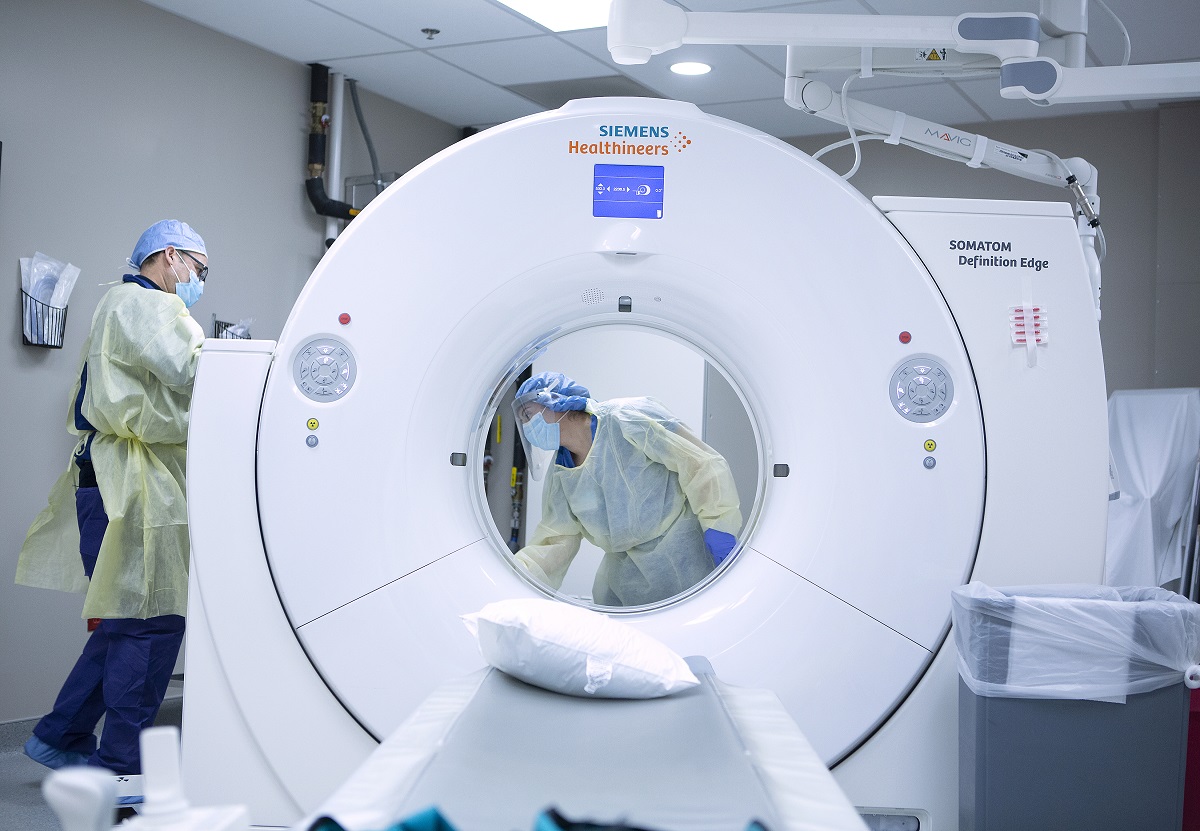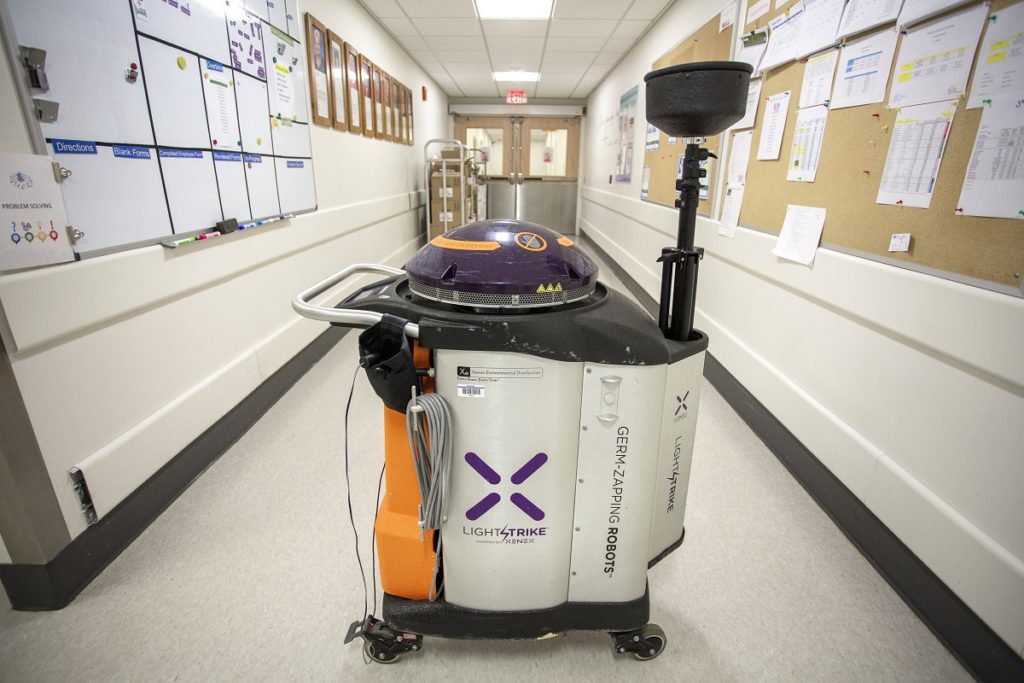High-tech meets high-touch to clean, disinfect Penn State Health facilities

From ultraviolet (UV) flashlights and luminometers to germ-zapping robots, experts in infection prevention and Environmental Health Services use multiple high-tech tools to keep Penn State Health Milton S. Hershey Medical Center and Penn State Health St. Joseph Medical Center facilities clean.
Creating a clean environment for patients, guests and visitors starts with one key ingredient—good, old-fashioned elbow grease. “We clean every single patient room every day,” says Kristofer Miller, quality coordinator and hiring manager with Environmental Health Services at the Milton S. Hershey Medical Center.
Environmental Health Services staff at Hershey Medical Center and St. Joseph Medical Center also follow best practices from the Centers for Disease Control and Prevention for hand-cleaning high-touch surfaces such as door knobs, light switches, tabletops and elevator buttons in patient rooms and common areas. “All our cleaners are rated to kill viruses such as COVID-19,” says Brent Roth, infection prevention manager at Hershey Medical Center.
The teams at both facilities then use high-tech tools to monitor their cleaning methods. Environmental Health Services staff members swipe cleaned surfaces with a cotton swab, douse the swab in testing fluid, shake it and enter it into a luminometer. That machine tests the swab for a material present in all organic material, adenosine triphosphate (ATP). A reading of between 0 to 50 relative light units (RLU) of ATP ensures a surface can’t support bacterial growth.
“Each Environmental Health Services manager tests 20 surfaces per month,” Miller says. In April and May, staff at Hershey Medical Center performed 1,376 surface tests, with 94% of those tests scoring in the 0 to 50 RLU range.
Those results are communicated hospitalwide at each campus, as are daily cleaning inspections and results. In addition, at St. Joseph Medical Center, ultraviolet flashlight and a fluorescent-marking spray helps ensure the cleanliness of surfaces. “We also use UV technology to educate housekeepers on best cleaning practices,” says Lisa Roth, director of Environmental Health Services at St. Joseph Medical Center.
While hand-washing is the first line of defense at both campuses, four germ-zapping UV cleaning robots, manufactured by Xenex, provide supplemental cleaning of surgical and procedural rooms and, if needed, patient rooms as an added precaution. Penn State Health has used the robots for five years. Robots named “Sparky” and “Zog” clean at Hershey Medical Center, while “Rosie” and “Zappo” clean at St. Joseph Medical Center.
Staff members also clean all hospital equipment based on the manufacturers’ recommended instructions, using best-in-class cleaning products. “For equipment used for patients with confirmed or suspected COVID-19, we clean everything twice,” Brent Roth says.
By combining technology with a human touch, Penn State Health’s employees strive to create the safest environment possible. “Given all of our infection prevention and cleaning programs and our focus on thorough cleaning of high-touch surfaces, our hospitals are some of the safest places to be,” Lisa Roth says.

The Xenex robots are some of the high-tech tools used by infection control and Environmental Health Services staff at Penn State Health.
If you're having trouble accessing this content, or would like it in another format, please email Penn State Health Marketing & Communications.
